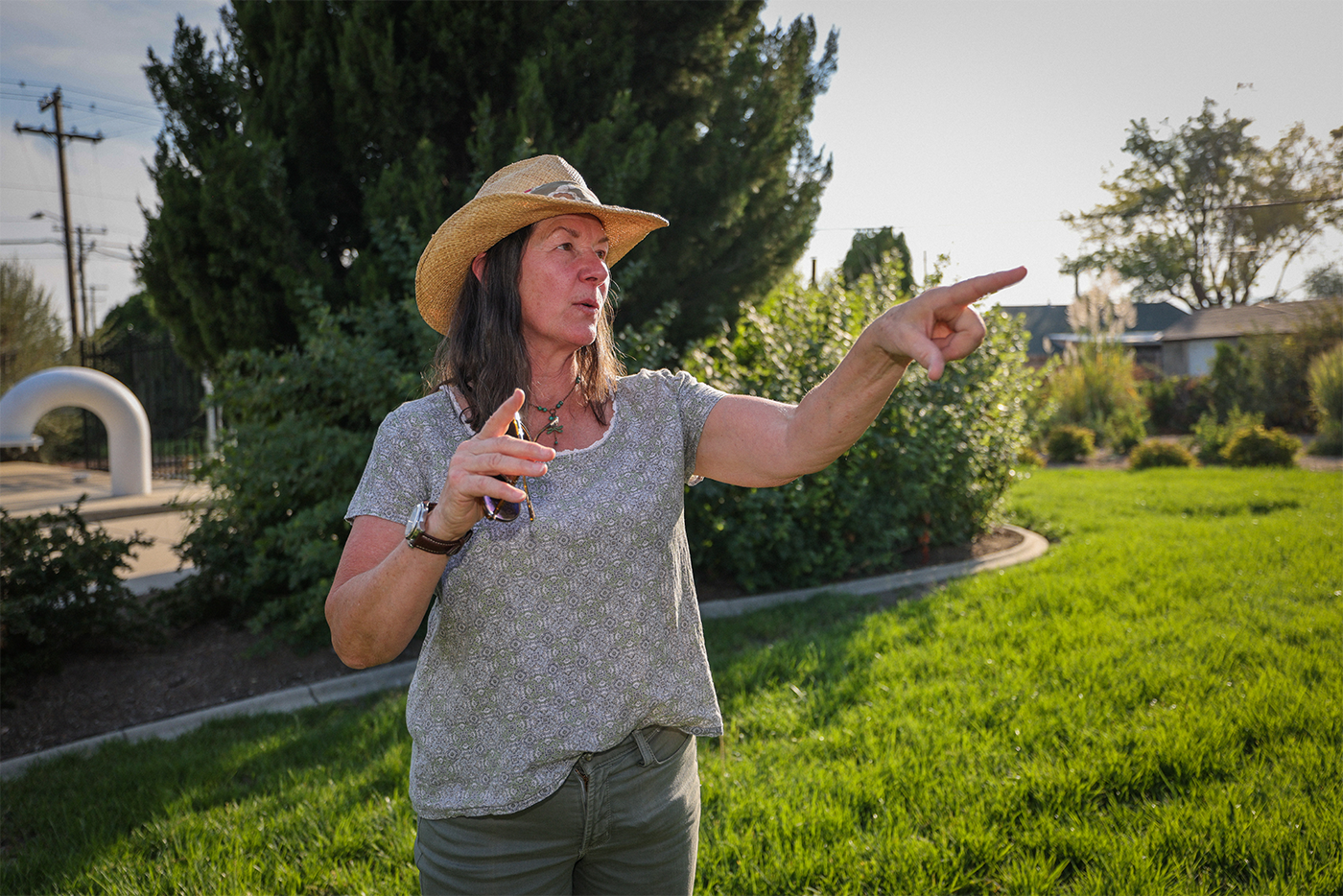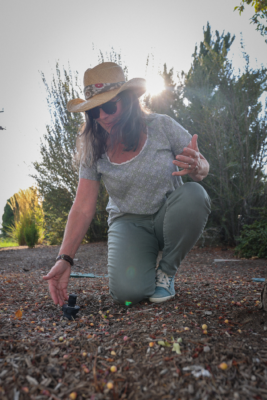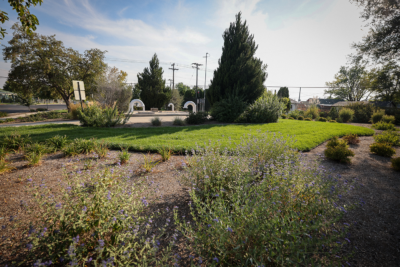
Highway to the Hydrozone: Eco-conscious Landscaping with Stephanie Duer of SLC Public Utilities
Activism, Outreach and Education
When people think of xeriscaping, they tend to think of it as a product with a specific aesthetic: rocky, grassless lawns run rampant with liberal environmentalism. If you love your grassy lawn, this perception may drive you away from even considering conservation efforts. Stephanie Duer, Water Conservation Manager for Salt Lake’s Department of Public Utilities, explains that xeriscaping and eco-conscious design, in general, aren’t an end goal but a process, an approach toward landscape design that considers the environment.

“It’s been designed to be water efficient but also to help protect our urban forest. Water conservation and urban forest health are not mutually exclusive.”
Duer’s department has created demonstration gardens that showcase the ways SLC residents can design their yards for our desert environment which only becomes more appealing after another hot year of drought. The most prominent of these are the greater Avenues Demonstration Gardens, which sit at the intersection of 11th Ave. and Terrace Hills Drive. This formerly nondescript corner now shows what a xeriscaping approach to lawn design might look like, with plants, shrubs and trees that are conducive to our semi-arid ecosystem. Herbaceous perennials, for instance, weather drought well and survive easily after establishing themselves. The garden is designed according to its specific location on a foothill and as a showcase. So, while it exemplifies thoughtful yard design, this isn’t a one-size-fits-all pitch.
Duer and I met at the Concord Flight Station, which is a functional sewer station that lifts sewage so that gravity can do the heavy lifting to move it. Though this isn’t advertised as a public park or a proper demonstration garden, the flight station was relandscaped in 2021 and is open to the public, who can see many of the design techniques that the city recommends residents adopt in their own yards. For instance, during the 2021 redesign, Duer had a huge swath of grass removed, particularly around trees. “It’s always better for trees to not be on lawns,” Duer says. For one, a tree’s cambium tissue, the part of the tree that is actively growing, is disturbed by lawn mowers and weed whackers, making it hard for trees to grow or establish if they’re new.
“We want to be an example and a good neighbor.”
Beyond that, trees and grass have different water needs. One of the more obvious implementations of eco-conscious design is in Concord Flight Station’s hydrozoning, which is simply the act of grouping plants with similar watering needs and patterns together. “Should we be in extreme drought at some point and not able to water the lawn or even the shrubs,” Duer says, “we could still water our trees. It’s been designed to be water efficient but also to help protect our urban forest. Water conservation and urban forest health are not mutually exclusive.”

The Department of Public Utilities offers several ways for residents to protect the urban forests in their own yards and neighborhoods. While the impact of individual action regarding global warming may seem negligible in comparison to the actions of billionaires and corporations, when it comes to water conservation, one can substantially contribute to relieving drought. SLC Turf Trade, for instance, is a program the department offers wherein residents can purchase a cool-season grass blend (comprising tall fescue and a bit of bluegrass) at cost to replace their current lawn. This turf requires at least 30% less water than typical, wholly bluegrass lawns. Combined with techniques like hydrozoning, mulching and mowing less often (grass likes its own shade!), as well as other services and products Public Utilities offers like rain barrels, one can reduce their water usage by even 50%—the amount Concord Flight Station was able to reduce its own usage. “We want to be an example and a good neighbor,” Duer says.
You can see Public Utilities’ conservation efforts, as well as check out the myriad conservation services offered to SLC residents, at slc.gov/utilities/conservation.
Read more articles on Salt Lake activism:
Don’t Obseve, Conserve! Help Save Our Great Salt Lake
Veggie Scraps: Composting with Earthie Crunchie